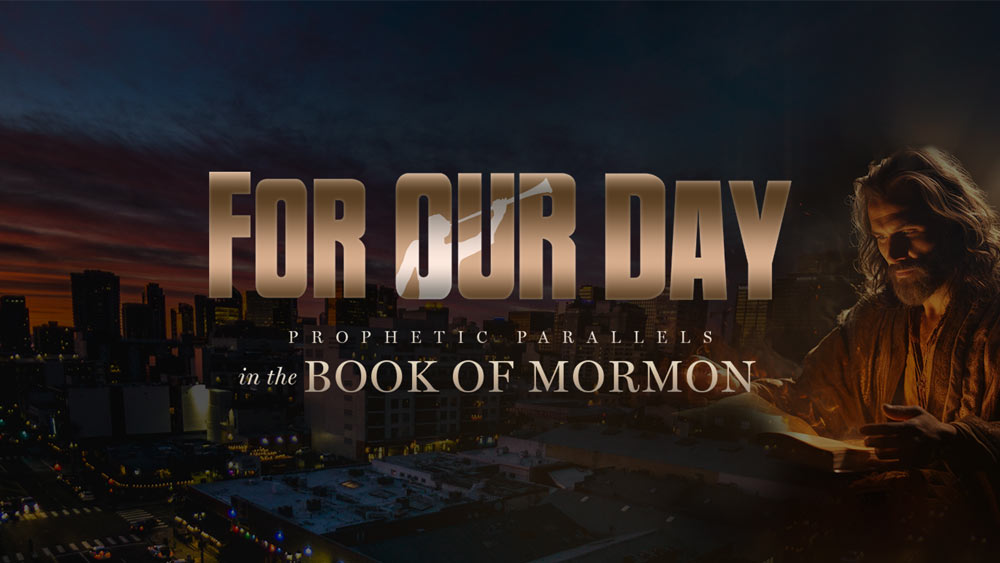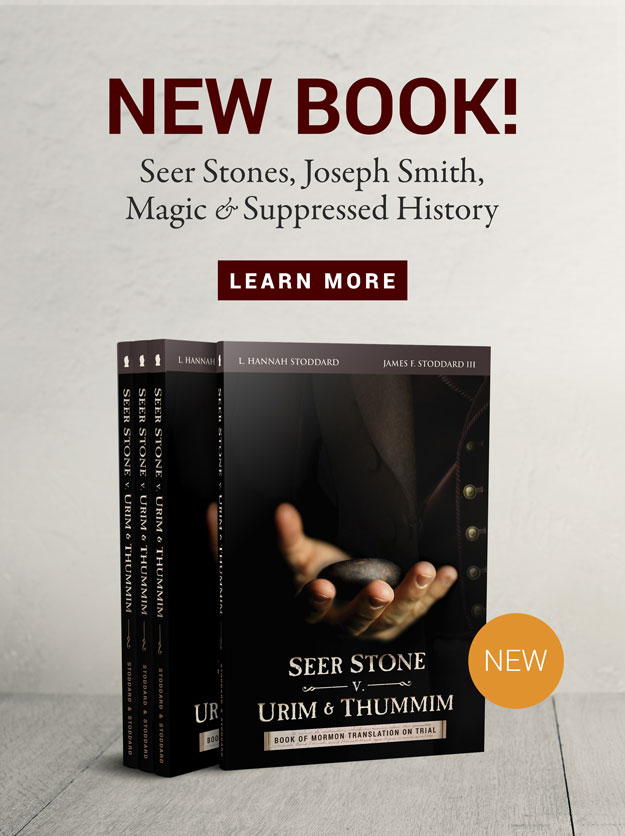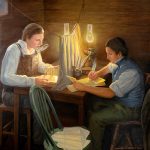Associated Locations:
- Woodstock, Vermont
Associated Dates:
- June 29, 1805 – Born
Hiram Powers is one of the eminent spirits who appeared to President Wilford Woodruff in the St. George Temple on August 21, 1877. This interesting story is detailed in the Eminent Spirits Appear to Wilford Woodruff wiki.
“At the beginning of the nineteenth century, the great Italian sculptor, Antonia Canova, was the man most responsible for returning sculpture to the standard from which it had declined in both classical beauty and moderation. The era of Canova, Thomas Jefferson is reported to have said, was without rival. The acknowledged heir to Canova;s classical crown, Hiram Powers ushered in the neoclassical period. The great Danish sculptor Thorvaldsen said, “he entrance of Powers upon the field constituted a [new] era in art.” Powers became the first American artist to achieve international recognition and because of his reputation, he did much for elevating the artistic education of his countrymen.” 1
“There should be a moral in every work of art.”
– Hiram Powers
Life Sketch from The Other Eminent Men of Wilford Woodruff
Copyright © Taken from the book: The Other Eminent Men of Wilford Woodruff. Special thanks to Vicki Jo Anderson. Please do not copy.
American Sculptor 1805-1873

Hiram Powers was perhaps the most famous American sculptor of his day. After viewing some of Powers’ works, John Quincy Adams wrote the poem entitled “To Hiram Powers”;
-
-
- “Sculptor! thy hand hath moulded into form
- The haggard features of a time-worn face
- And whosoever view thy work shall trace
- An age of sorrow, and a life of storm!
- Artist! May fortune smile upon thy hand!
- Go forth, and rival Greece’s art sublime;
- Return, and bid the statesmen of the land
- Live in the marble through all after time!
- O, snatch from heaven the fire Prometheus stole,
- And give the sculptured block a living soul!”
-
Early Life
Hirum Powers was born at Woodstock, Vermont, 29 July, 1805. He was the last of eight children. The family was frugal, hardworking, the affectionate. Powers accounted it as a special blessing of his childhood to have been reared by honest and harmonious parents. The family struggled for existence on a poor farm, Hyrum’s father signed a note for a friend who defaulted causing him to lose what little property they possessed. The family had to leave beautiful Vermont and move to Cincinnati. Powers’ expression about his childhood show that he held der his recollection of Woodstock.
He wrote:
-
-
- Dreams often take me back to Woodstock and set me down upon the green hills, the rocks or up to the knees in [the] Queechy. The dear old church bell is ringing in the distance and the smell of orchards greets me. I shall never forget the morning I left. I sat in the hind end of the wagon and watched the village as it faded away … When I looked backed on the church spire shooting up into the clear morning sky, and gazed on the hilltops I had wandered over for the last time, and the pure river, whose banks I should tread no more, I turned away my head and wept alone.
-
Members of the family were often sick because of the swampy land on which they settled. Soon after the family arrived in Ohio the father became sick and died.
Powers’ Schooling and Work
Hiram was sixteen years old when he left home. His total schooling amounted to about four years. He obtained a job in a hotel taking care of the newspapers in the reading room. Here he became an avid reader. His pay consisted only of room and board, but he was grateful to have food to eat. When his only set of clothes began to rot off his back, he found a paying job in a grocery store. In his spare time he made models of animals and monsters in butter.
He soon became an apprentice in a clock and organ factory. He grew so knowledgeable about the factory machinery that he was able to improve its efficiency. He soon surpassed most of the other workers in telent and skill. Later he found a job in a museum where he used his talents in the repaire and fabrications of wax figures. His genius began to show when he designed a mechanical organ that had life-sized figures which moved, sounded trumpets, and rang bells.
This innovation brought him to the attention of a noted English lady, Mrs. Frances Trollope, who was visiting Cincinnati. Together they designed for the museum a scene that was reminiscent of Dante’s hell. They called it “The infernal Regions.” The exhibit included smoke, lightening, clanging of chains, and other frightening sounds. He designed stalactites and stalagmites in a dark grotto. Wax figures that could be moved by a string were set up. He succeeded so well that he ended up inventing a whole series of automations. The museum became so popular that people had to stand in long lines in order to get in.

Powers’ Marriage
Powers remained at this job for seven years. During this time he met Elizabeth Gibson, who was to be the perfect companion for this budding artist. They married and she managed this household affairs in such a manner that the family never wanted.
Interest in Sculpting
Soon after his marriage Powers began to discover his real expertise. He had an opportunity to visit the studio of a German sculptor, where he saw for the first time a marble bust. He was facinate and excited by it and asked many questions which gave him some general ideas about sculpturing. He borrowed a lump of clay and began to experiment. It was not long before he began taking order for busts.
Powers’ Works
One of the orders came from a wealthy man named Nicholas Longworth. Longworth had ardently believed that the United States needed artists, particularly sculptors. He provided financial assistance for Powers to go to Washington, D.C., supplying him with letters of introduction to some of the leading men of the time. In time Powers created busts of a number of the most eminent men of the period—Cheif Justice Marshall, Daniel Webster, John C. Calhoun, and even President Jackson. When the President came for his “sitting,” he warned Powers to “make me as I am, Mr. Powers, and be true to nature always, and in everything. It’s the only safe rule to follow.” The result was an exacting work in realism.
Powers realized that in his country he had progressed as far as he could, for America had yet to produce its own masters. With a loan from another wealthy businessman, John Smith Preston, he traveled to Italy to study. He was accompanied by his wife and two little children. Smallpox broke out on board ship, and Mrs. Powers came down with the disease. They stopped over in Paris for her to convalesce. Powers used this opportunity to visit the Louvre and other museums.

When the family arrived in Florence they were welcomed by another American sculptor, Horatio Greenough, who helped them got settled. Powers found a studio and began filling orders, mainly for busts of prominent Americans. These sculpture/portraits were dominate by a strong “naturalism.” During this time he produced some 150 portrait busts.
After a few years in Italy, the great Thorvaldsen visited Powers’ studio and remarked that theb ust of Daniel Webster was the finest example of its type. Powers had just completed his ideal statue, a representation of Eve, and Thorvaldsen stopped momentarily in front of it Powers began to apologize, stating that it was his first full statue. But the noble old sculptor would not let him proveed with his apologies and gently said, “Any man might be proud of it as his last.”
When Mrs. Trollope, Powers’ early mentor visted Powers at his studio, she discovered her protege struggling to advance his craft as he could not afford marble to care the ideal figures he had been trying to do in his spare time. In time, however, Powers’ reputation would grave and he would be able to accumulate enough money to carve his famous statue, The Greek Slave.
It has been said the The Greek Slave was the best-known American work of the mid-century and quite possibly the entire century. Its first exhibition was at the 1845 World’s Fair in the Crystal Palace in London. It had enormous impact on all classes of people. Two years later it toured the United Staes. For the first time on of America’s own sons culturally affected the nation through “high art.”
This particular statue reached into the very fiber of American life and thought. It touched deeply sensitive areas such as the role of women, attitudes towards sexuality, and growing feelings over the slavery issue. Powers described the moral of his Greek Slave noting the Greek War for Independence had been over for about ten years, when he made his statute.
The Slave has been taken from one of the Greek islands by the Turks. Her father and mother, and perhaps all her kindred, have been destroyed by her foes, and she alone preserved as a treasure too valuable to be thrown away. She is now among barbarian strangers, under the pressure of a full recollection of the calamitios events which have brought her to her present state; and she stands expose, [stripped of her clothes and possessions], to the gaze on the people she abhors, and awaits her fate with intense anxiety, tempered indeed by the support of her reliance upon the goodness of God. Gather all the afflictions together, and add to them the fortitude and resignation of a Christian, and no room will be left for shame. Such are the circumstances under which the Greek slave is supposed to stand.

Powers further commented:
-
-
- I hold that artists should do honor to their own times and their own religion instead of going back to mythology to illustrate, for the thousandth time, the incongruous absurdities and inconsistencies of idolatrous times, especially as our times and our religion are full of subjects equal in beauty, and have all the qualities necessary to a full development of art.
-
He accomplished this ideal with The Greek Slave and other statues that followed. “It is an error to suppose that features are accidental [Powers said] and nature makes them up at haphazard; fpr the face is the true index of the soul, where everything is written had we the wisdom to read it.”
In 1839, Italy’s Bartolini pronounced Powers the greatest portrait sculptor then living. Although Powers remained in Italy and eventually died there, he was a patriotic and loyal son to the land of his birth. The son of a common American farmer, he gave to his homeland the virtues of art that lifts civilization.
Authors Note: Because our modern culture often tantalizes us with nudity, it is difficult today to distinguish between a great work of art representing the beauty of creation and the abomination of pornography. Dr. Aurthur Henry King helps us with a simple rule of thumb. He writes: “To tell the difference, we need always to ask ourselves whether a picture enables us worshipfully to enjoy the wonder of creation or simply arouses lust. A completely unclothed figure may produce a feeling of reverence, while a partly clothed figure in a glossy magazine may be provocative or inane.”
Copyright © Taken from the book: The Other Eminent Men of Wilford Woodruff. Special thanks to Vicki Jo Anderson. Please do not copy. [1]
Resources
References
- ↑ Anderson, Vicki Jo. (1994). The Other Eminent Men of Wilford Woodruff. Cottonwood, AZ: Zichron Historical Research Institute.








One Response